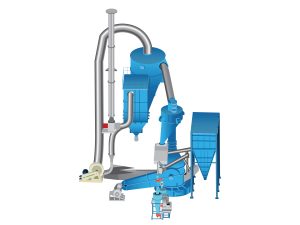 There are 5 key questions to consider when selecting a milling and/or classification system. Customers looking to improve or replace a current system typically have the answers on-hand or at least know the current conditions of their milling process and have defined performance goals. However, those looking for new systems often have information available about the materials to be milled, and the desired end product specifications, but may not factor in the importance of the questions below. There is quite a bit more information we require to provide a complete project proposal, but we’ve found that the answers to the 5 questions below significantly help in developing the quote, and often helps to determine the viability for manufacturing and commercial profitability.
There are 5 key questions to consider when selecting a milling and/or classification system. Customers looking to improve or replace a current system typically have the answers on-hand or at least know the current conditions of their milling process and have defined performance goals. However, those looking for new systems often have information available about the materials to be milled, and the desired end product specifications, but may not factor in the importance of the questions below. There is quite a bit more information we require to provide a complete project proposal, but we’ve found that the answers to the 5 questions below significantly help in developing the quote, and often helps to determine the viability for manufacturing and commercial profitability.
1.What is the Particle Size Distribution (PSD) of the Feed?
Information on specific feed characteristics helps to determine the type of system needed to produce particles to specification. Sometimes all that is required is a classifier and other times the PSD of the feed will indicate the need for both a mill and classifier to get the output desired.
2. What is the target size (a.k.a. cut point)? Micron and % passing?
For high rates of % passing, more energy is required, or a bigger mill is needed to meet specifications. Finer target sizes will require higher % passing. Often, customers request 100% passing, but really only need ~80% passing to meet their desired output.
3. What is the moisture content of the feed?
The amount of moisture will determine the need for a drying system on the mill or classifier. Typically, anything more than 2% moisture feed requires a dryer.
4. What ton per hour (TPH) do you require?
Knowing your output goals helps us to accurately size the machine based on the volume of chamber required to meet the TPH.
5. What is the chemical analysis of the material?
When reviewing material composition, we typically look for the levels of silica or quartz (contaminants), which can increase wear and/or slow down the processing.
Contact us to request a quote for a milling and/or classification system and we’ll be sure to help guide you through reviewing this information as well!
